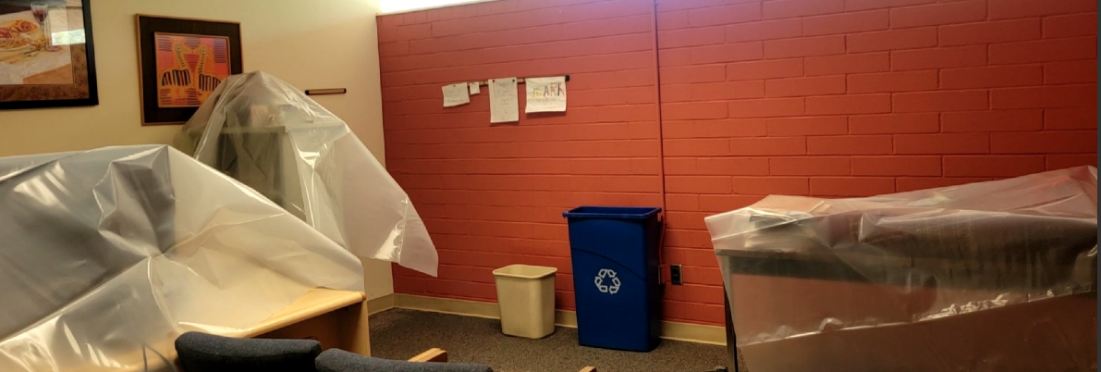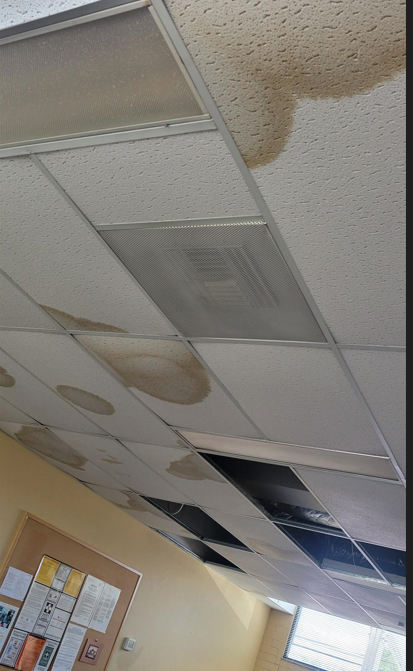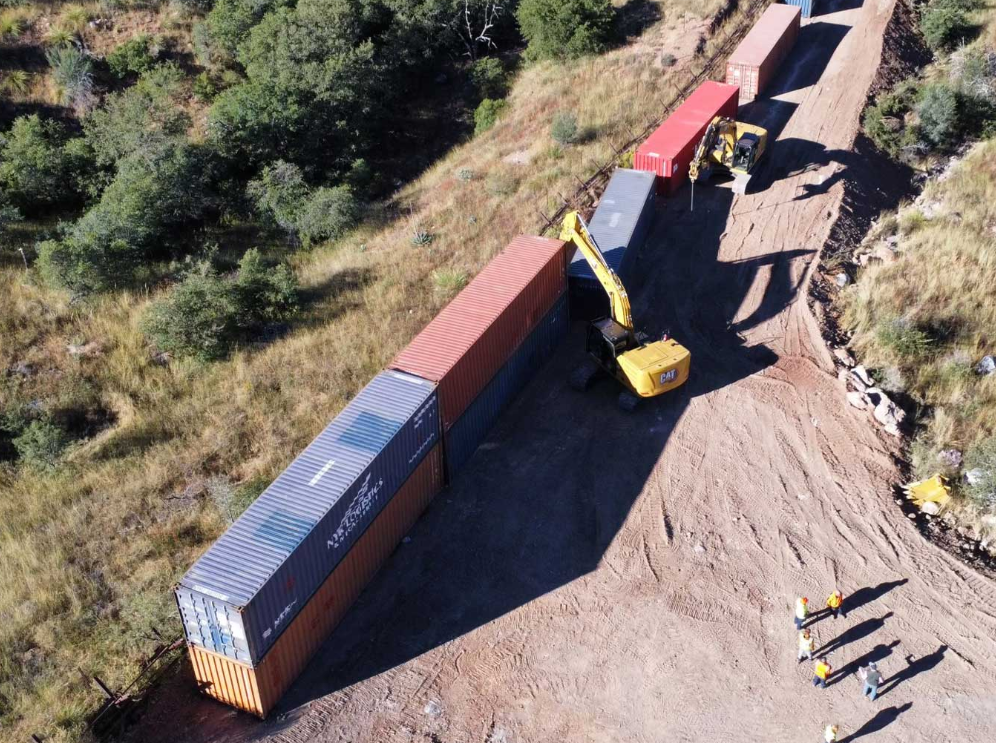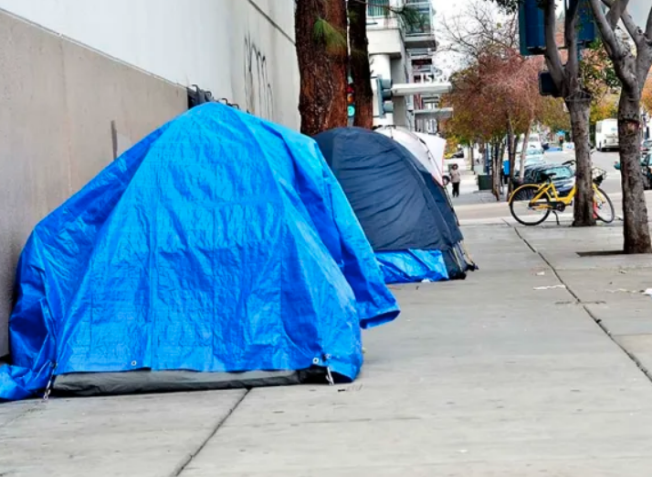|
Date: 07/31/2023
Topics in This Issue:
-
Good Deed Recognized
-
Election Day is Tomorrow
-
Rat Finale
-
Refugee Donations
-
Monsoon Rains Start
-
Tucson Plastic Program
-
Transit Changes
-
Casita Model Plans
-
More on Tiny Homes
-
Safe Camping – Controlled Camps
-
Student and Workforce Housing
-
29th Street Thrive
-
Ready, Set, Rec
-
Alvernon Grant Initiative
Due to the storm damage that hit last Friday the ward 6 office will be closed this week. We’ll still be checking phone messages and responding to emails, but there won’t be any public access to the building while repair work is being done. More on this below.
Good Deed Recognized
I run every morning. Last Friday I was headed up Campbell at around 6am and saw a guy who was in a wheelchair crossing Campbell west to east. A guy driving a big red pick-up truck was also crossing west to east. Instead of just driving across Campbell and off on his way, the guy in the truck slowed way down so his truck was providing a large visual barrier, creeping along at the same pace as the guy in the wheelchair. He recognized that people might not see the guy in the chair, but they’d certainly see his truck. The truck driver and I shared a wave acknowledging his good deed. He deserves this note of credit as well.
Election Day is Tomorrow
There are primary elections on Tuesday – it'd be great to see a larger-than-normal turnout. The people in each city council seat and the mayor are combining to make some pretty important decisions on your behalf. This is your opportunity to take part in selecting who’s in those seats.
There are contested primaries in wards 1, 2 and at the mayoral level. You can either drop off your filled out ballot or vote a replacement ballot at any of the following locations. They’re due by 7pm sharp.
Rat Finale
Knowing that we’re not going to send the urban rodents packing, there are several options homeowners can consider. The real message is to protect the perimeter of your home to keep them out and manage what’s on the outside of your house to reduce the attractiveness of the habitat. As a final piece on this I’ll share Lauren Gilger’s KJZZ Phoenix radio piece. She reflects on problems they had up there, and how we can address it in Tucson.
Refugee Donations
Thank you to all who continue to bring by bottled water. We’re making weekly drops at Casa Alitas. With the temperatures the hottest in history, the water is a life saver.
Casa Alitas is still seeing about 550 to 600 new arrivals every day. The quantities are putting an understandable strain on their resources. The volunteers and staff are on site every day taking asylum seeking people in, getting them fed, clothed and their medical situations managed. Then they’re off to next of kin or a sponsor while they await the continuation of their legal asylum claim adjudication.
In the very recent past there has been a decrease in the number of single adults making the journey across the desert, and an increase in family units showing up at Alitas. The system of shelters working together to provide support includes partners in Phoenix and Las Cruces. The county is managing the transportation to other shelters. The amount of transportation that was needed in July will exceed any other month so far. With the temps so high, that’s a surprising reality. In the past the summer has seen a bit of a slowdown. Not so now.
This chart shows the breakdown of recent arrivals. Look at the daily averages – that's every day, and those numbers represent people. Young and old. We at the ward 6 office are truly appreciative of your donations, and appreciative of all the Tucson and Pima County residents who are supporting the work out at the Alitas center.
In addition to the water some basics we need constantly are sunscreen (Phoenix was the worst city in the nation for sun exposure last Friday,) lotions (lots of blisters on the feet of new guests,) personal hygiene products (thank you to the woman who dropped off 4 large bags of feminine hygiene products,) ball caps, shoelaces and shoes sizes 9-13. New and unused underclothes and socks are always needed as well.
Monsoon Rains Start
Last Friday you likely experienced our first hard monsoon hit. At the ward 6 office every room in the building lost ceiling tiles from leaks in the roof, electric fixtures in 4 rooms in the building were taking on water, two computers had issues due to water leaking onto them, the rug is a mess – and we are some of the lucky ones in the community. The office is closed for this week while crews work inside the building doing a variety of repairs. We’re having to cancel all meetings in the building. I’ll send out a notice when we know whether we’ll be able to reopen next week.
 |
 |
So, for a while we’ll be a work in progress. I appreciate Diana for carving out the majority of her Saturday to come in and help move things around and cover computers. And the city FM staff was here in force, removing light fixtures, cleaning roof drains, and putting together a game plan for what will likely be a full roof replacement. There’s lots of hail damage up there. In Michigan we had what we called little drizzles. That doesn’t exist in Arizona.
TEP reported having over 56,000 of their customers without power on Friday evening. By Saturday morning they had restored power to about 40,000 of them – and were watching expectantly at the rest of the weekend forecast. Kudos to the TEP workers who were out all-night getting peoples’ power back on. They’ve got a tough job, and this time of year in particular. This map shows the breadth of the outages – it wasn’t one small cluster from a micro-burst:
This picture shows how the outage issue spread to so many people. On Country Club Road there was a series of poles down.
Wouldn’t it be great if that infrastructure was underground. And our cooling station at the Donna Liggins Center was out due to the power outages. It was just last week that I shared with the citizen climate commission that we should be setting up micro-grids set aside from the TEP power grid so critical infrastructure like the cooling centers and our water stations would not be affected by these kinds of outages.
Maybe now that conversation will get some traction.
To that end, TEP is about to resume its public outreach to talk about midtown power upgrades. This is the resumption of the DeMoss-Petrie transmission line discussion that led to the Prop 419 franchise agreement vote. That failed so now the conversation resumes.
This is the map showing the project study area. It’s essentially the same as before, with a 1-mile expansion to the east so we’ll soon see what new thoughts the utility brings to the table.
Their goal is to modernize the TEP delivery system. Many would like to see that include undergrounding where possible to avoid the outages that seem to be annual events this time of year. And they’ll only become more common as extreme weather events also become more common. During my remarks to the climate group, the TEP representative who was on the call said they’d prefer we work with and through the utility to do microgrids. I’m fine working with them, with the caveat that our mutual goals should be to get resilient power sources, reduce the load on their grid and get some stand-alone microgrids up and running at several key sites.
TEP says they’ll be reaching out to neighborhood associations ‘in the coming weeks’ to restart the talks. I’ve let them know my office will help to facilitate those meetings if they’d like that assistance.
Tucson Plastic Program
Friend of ward 6 Alison sent me this picture. It’s an art piece in Santa Fe that is made entirely of single use plastics. I think it’d be fun to commission a smaller animal figure and fabricate our own plastic collection bin. I have a couple of conversations about that in play. Why an animal figure? Because it’s marine life that we’re killing with our plastic litter.
Last week was another 4-ton plus collection week. The ward 4 site is picking up steam and for the recent past has been over a ton on their own each week. It shows the continuing support for this program that exists out in the community. Last week we identified the location for the ByFusion operation – the real estate agreement needs to be approved by M&C so it’ll be a few weeks before I can give more of a description. But ‘having an address’ is a big step towards getting them here.
The Reid Park Zoo ecochallenge ends this week. Based on the points I saw on Sunday our zoo will end up in 8th place nationwide. That’s from among 224 teams that entered. Reid Park has 148 members on their team. The Maryland zoo that won was able to recruit 376 members. By this time next year, with ByFusion here and operating I think we can take the top prize. I’ll work with Nancy and her team at the zoo to help promote it better next time around. In the meantime, though we’ll have our ByFusion bench out at the zoo with the name of the Tucson winner as soon as I get the word from BF that the kits are finally available.
The Lions Club in Tucson has been a big supporter of the plastics program since we started it. They’re having their 100-year anniversary this year and for that event they’re going to recognize the plastics program as a part of their program.
 The event will be a fun one held out in Trail Dust Town at the Savoy Opera House. We don’t have all the details yet on how to get tickets – I'll share them when we do – but a part of it will be my providing the music. I’m looking forward to both the musical part of the evening, and of course to be able to share with them about our progress as a community in bringing the ByFusion operation to Tucson.
Transit Changes
The city funds much of our transit network. The Pima Association of Governments (PAG) and the RTA kick in funds for routes outside of the city, weekend and evening service. Together we’re looking at the full system with an eye towards improving the product. That involves your input.
Some of the changes being considered include:
-
Realigning and extending routes
-
Investing in high-frequency service
-
Improving access and quality of service
-
Extending service hours
-
Adding weekend frequency
There’s a survey you can access to offer your input. The feedback is due by September 8th. Use this link to take part in the survey: https://bit.ly/coa-survey-2
There will also be a series of town halls and pop-up events you can go to and give your input. This link gives the full schedule of all of those opportunities. tucsoncoa.com
Whichever way you choose, getting your voice into the mix is an important piece of the decision-making process.
Casita Model Plans
When we adopted the Accessory Dwelling Unit code change some of the M&C felt they’d be a pathway to affordable housing. They’re not making a dent in the housing stock need, but we’re going to implement a change that will at least chip away at the upfront costs someone will pay under the current arrangement.
In typical construction jobs the cost of an architect is usually in the 10% to 15% of the project cost range. Let’s say your costs for building a 750 sq/ft casita will be around $100,000, all-in. That means you’re spending about $15,000 just to get the floor plan and design drawings done. We’ve begun a design selection process where the city will select about 10 model plans that will be made available to potential ADU builders. The goal is to reduce the upfront costs and hopefully get more of these units built.
Each of the 10 designs selected to be in the mix will receive a $1,000 prize that’ll be funded by AARP. Everyone is invited to submit plans; architects, contractors, students, designers – the goal is to offer your creative input to potential builders. And an added benefit to people using one of the model plans is that we won’t be charging permit fees for review of the plans. They’ll be pre-approved and off you go.
Our planning department will be hosting a zoom where they’ll describe the design competition and take your questions. That virtual meeting will take place on Thursday, August 3rd at 9am. You need to register for the Zoom session. You can use this link to get registered and to learn more about the casita program in general: Casitas in Tucson Feel free to contact Dan Bursuck if you’ve got questions about this program or the competition ahead of the zoom. His email address is: daniel.bursuck@tucsonaz.gov.
More on Tiny Homes
During our August 8th study session, we’ll be having what I hope to be a comprehensive discussion about code changes we need to make in order to facilitate various forms of affordable housing. I’ve asked for that item to be no less than a 40-minute exchange. There are several areas of our existing codes we’ll need to adjust if we’re going to provide tiny homes and tiny home villages as part of our housing mix in Tucson.
The Vail school district is already moving along with a tiny home village concept. Their goal was to provide affordable housing for teachers and staff they’re trying to recruit and retain. The reality is you will have a tough time qualifying for a home loan for a median priced unit in today’s market on a beginning teacher’s salary. In many of those cases the school administration found people were avoiding the area because the housing mix that’s available and the costs associated with it were prohibitive. Their village will directly impact that reality.
Right now, the Vail school district has 4 tiny homes built and occupied in their village. Here’s a picture of the village. Their goal is to have 24 tiny homes clumped into the space.
Each of the Vail units is under 400 square feet. One way they keep the costs down is to have the entire unit built by Vail students operating under the supervision of a contractor. The students get grade credit while learning multiple construction skill.
Last week, I had an interview with Danyelle Khmara from AZPM. You might remember her from either the Weekly or the Star. We talked about using the border shipping containers that are now being sold for housing. Here’s a copy of that brief interview: https://news.azpm.org/p/bordernews/2023/7/25/216905-arizonas-defunct-border-wall-project-could-help-with-tucsons-affordable-housing-efforts/
 |
The state is selling Ducey border wall shipping containers from anywhere between $500 to $2,000. The price depends on the condition of the unit. I hear the city has put in a bid for 100 of them – although I haven’t been able to confirm that. Often things like this are done without floating the idea around so one gets to ‘take credit.’ That doesn’t matter. The concept of the shipping containers is sound and I’m supportive. In fact, there’s a company I’ve spoken to several times called Boxes of Hope. They also have a supply of the containers and they’re working with an Austin, Texas design firm with the goal of moving container villages into our local market. Here’s just a portion of the letter of support I wrote for Boxes of Hope in their effort to get a grant from the state of Arizona to help with their own upfront costs:
 |
Also, in the interest of getting people into homes you should know about the city’s down payment assistance program. This is an income-based program that can pay up to 20% of your home buying contract sale price. This is for people buying a home that will be used as their primary residence. It’s not a way to fund investment property. You can use this table to see if your household qualifies under the HUD median area income limits:
This isn’t a totally free contribution to your down payment. The city requires a minimum of $1,000 being contributed by the applicant. You can learn more about this program through any of these participating agencies:
Family Housing Resources – Cris Yonsetto – 510.318.0993
Pima County Community Land Trust – Elias Garcia – 520.603.0587
Primavera Foundation – Lupita Rodriguez – 520.882.5383
Pio Decimo Center – Sonia Lopez – 520.622.2801
Compass Affordable Housing – use this link to see all of their local housing villages -
Safe Camping – Controlled Camps
Until we have sufficient shelter space, the issues we deal with related to homelessness will continue to be a challenge. Buying one hotel at a time to address 30-50 people is leaving hundreds of others scattered in washes, alleys and over many back yard fences. For going on 2 years, I’ve been advocating for safe parking areas, a large no-barrier men’s overnight shelter and safe controlled camping areas. The city of San Diego is implementing a safe camp this week.
 |
To be clear, there’s nothing wrong with Housing First and the model we’re using. It simply doesn’t touch enough people with a shelter option. San Diego has the same issue – insufficient shelter capacity. Every major city in the country is facing that. In an effort to clear off sidewalks and provide people a safer camping environment until better options are available, in San Diego they’re setting aside space in two city owned parking areas near Balboa Park for camping. They’ll provide security, bathrooms, meals and social support services. We should do the same.
The city of Phoenix is responding to a lawsuit they lost that was filed by business owners over what was called ‘The Zone’ - a huge uncontrolled camp that became a crime magnet in downtown Phoenix. They’re now relocating those campers to something similar to the controlled safe camps I’m suggesting.
The message about what we’re doing right now is that it’s working for some, but it’s not working for far too many others.
Student and Workforce Housing
The Speedway/Euclid Capstone student housing project continues to evolve. This is an image of how the project was first presented to us. This is looking towards the southeast from the corner of Speedway and Euclid.
I and others raised concerns over two primary points – one, we promised that Euclid would be a buffer between the existing student housing and the West University neighborhood. Second, the massing at the edge of the intersection needed to be reduced. Here’s the current design being proposed in response to those and other concerns:
You can see the stepped-back massing at the edge of the intersection. What’s more difficult to see is along Euclid there are 30 two-story 1 bedroom and studios that will be dedicated as workforce housing. That means serving people earning 80% to 120% of the area median income. For a single person that range is from $45K to $68K. For 2 people living together, it’s $52K to $78K. Housing like this touches what’s known as the ‘missing middle’ of income earners. The Capstone units will be rentals, each in the roughly 450 square foot range. The student housing component to the project will have just over 400 beds.
There are 5 existing historic homes on the site. Through quite a series of meetings, Capstone is agreeing to relocate all of them to a parcel that’s within the WUNA historic zone so they’re not losing any eligible properties in their historic count.
The process that’s still ahead is for another neighborhood meeting, followed by the zoning examiner hearing and then a public hearing in front of the M&C. I’m expecting to be facilitating the neighborhood meeting sometime in early September – if our building has recovered from the monsoons by then. This is a rendering showing how the studio’s layout in the project as the intended buffer for WUNA.
I’ll of course give as much advance notice through the newsletter as I can ahead of the neighborhood meeting.
29th Street Thrive
Last weekend Nadia represented ward 6 during the 29th Street thrive back to school bash event. The ward 4 office and city staff take the lead in much of the planning for the event. There was a great turnout that included residents from around the area.
The city was well represented by multiple departments. Lots of bling being handed out. We’re grateful for the leadership coming from the TPD and HCD staff to stage these 29th street events. The Ready, Set, Rec van was there along with food trucks, jumping castles and water games.
Ready, Set, Rec
My customary thanks to Sierra Boyer for getting us the August RSR van schedule. We were meeting with a non-profit that does some serious dabbling in the arts and suggested they connect with our RSR van. So, stay tuned and the activity mix for the ward 6 van might soon be expanding. But for now, connecting with our parks staff and just having a good time with the existing activities is worth the trip to your local park.
Alvernon Grant Initiative
The long-running AGI meetings continue each second Tuesday of the month. These are combined neighborhood/TPD meetings during which residents share with the police the issues they’re seeing around their homes and businesses. We’ve got 3 similar groups of neighborhoods joined by common borders meeting periodically with the police to become the force extenders for TPD. AGI was the first – they meet at Emmanuel Church located at 1825 N. Alvernon. The meetings run from 6pm until 7pm.
Even if you are not living in one of the 4 neighborhoods that border the Alvernon/Grant intersection, you’re welcome to attend, listen in and see how the process works. You might leave with an interest in starting up a similar meeting. My staff and I will be happy to help facilitate that with you.
Sincerely,

Steve Kozachik
Council Member, Ward 6
ward6@tucsonaz.gov

City of Tucson Resources
|